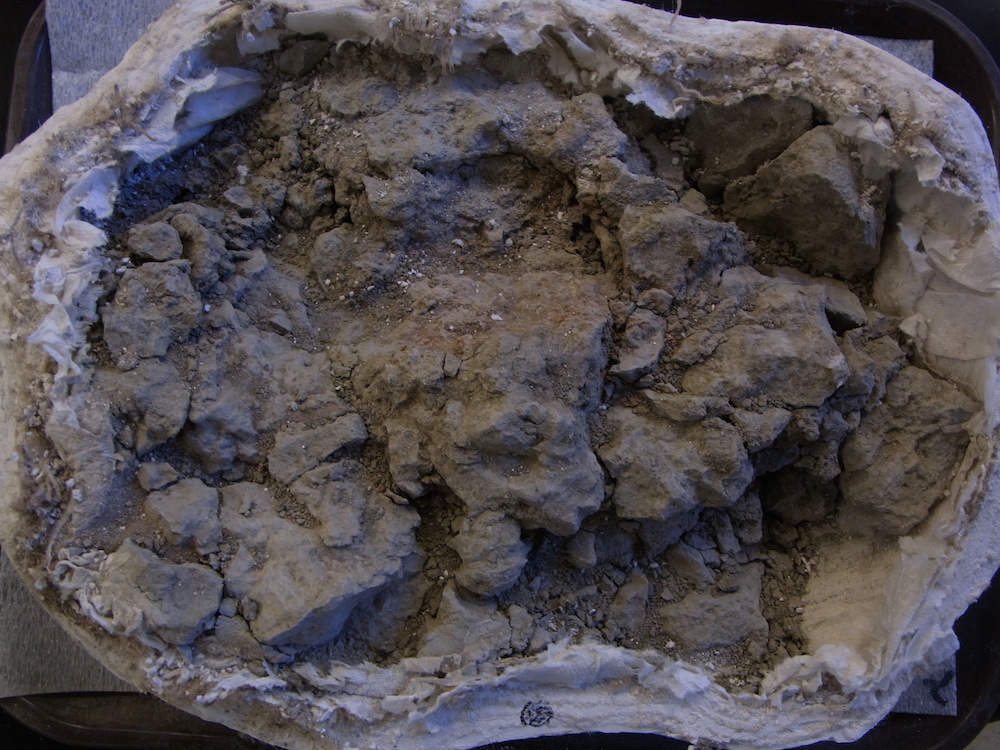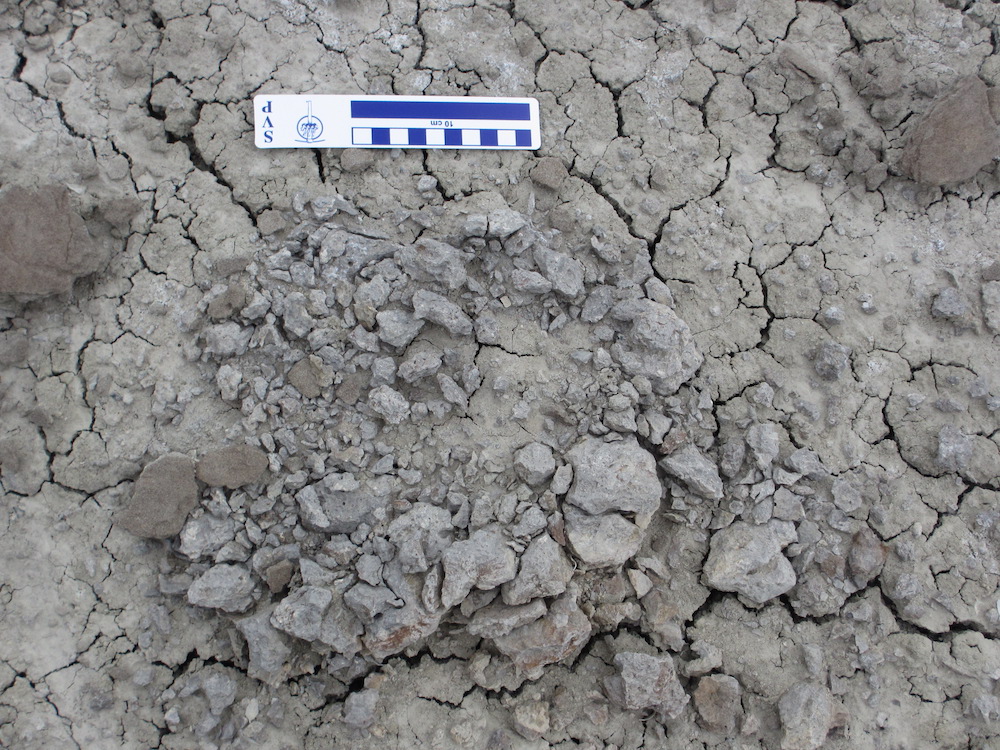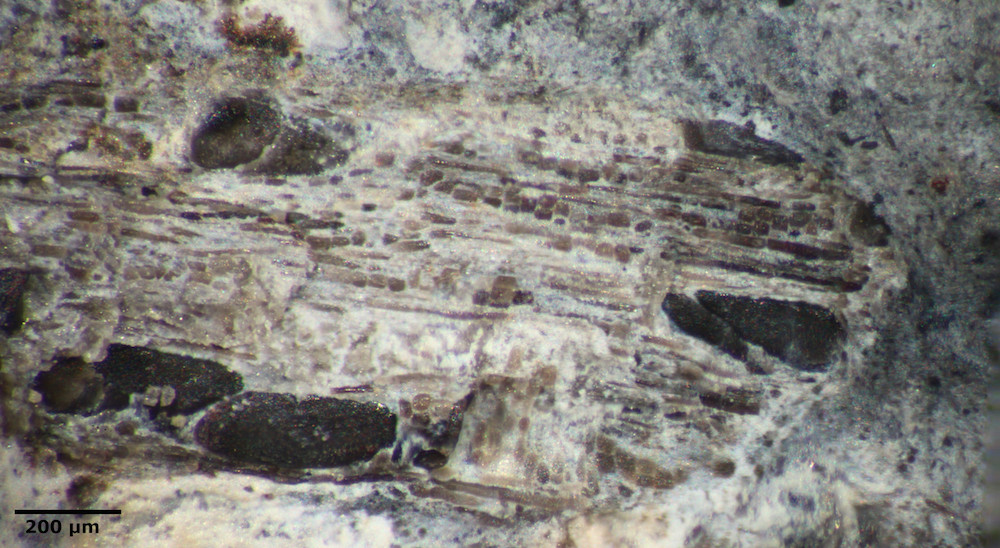Paleo Diet: Giant Turds Show Dinosaurs Dined on Flowering Plants

Two lumpy pieces of fossilized poop show that some dinosaurs ate flowering plants during the Late Cretaceous period, about 75 million years ago, new research finds.
The two turds are a prize find, as fossilized dinosaur droppings containing traces of flowering plants, known as angiosperms, are rare, said study researcher Nicole Ridgwell, a graduate student in museum and field studies at the University of Colorado Boulder.
A microscopic analysis showed that the fossilized excrements — known as coprolites — contained pieces of angiosperms. [Image Gallery: Parasite Eggs Lurk in Fossilized Shark Poop]
"What stands out the most about these coprolites is that they have little fragments of angiosperm wood in them," Ridgwell told Live Science in October at the 75th annual Society of Vertebrate Paleontology conference in Dallas, where she presented her unpublished research.

Karen Chin, an associate professor at the University of Colorado Boulder Department of Geosciences, found the fossilized excrement in southern Utah. Both of the turds are hefty — one is about 12 inches long by 10 inches wide [30 by 25 centimeters], and the other is broken and eroded, so it's difficult to measure, Ridgwell said.
"They're too large to be anything but [from a] dinosaur," she said.
There are few known dinosaur coprolites containing angiosperm fragments. An early Cretaceous ankylosaur found in Australia had the remains of angiosperm fruits in its gut, according to a 2000 study published in the Journal of Vertebrate Paleontology. And excavations in India yielded dinosaur coprolites, possibly of the long-necked titanosaur sauropods, that show traces of early grasses, according to a 2005 study in the journal Science.
Sign up for the Live Science daily newsletter now
Get the world’s most fascinating discoveries delivered straight to your inbox.

The newly discovered coprolites in Utah provide more support that some herbivorous dinosaurs munched on angiosperms, Ridgwell said. These flowering plants first appeared during the Early Cretaceous, and rapidly diversified throughout the Late Cretaceous, competing with ferns and gymnosperms (plants with exposed seeds, such as conifers), the researchers said. The angiosperms' success likely also helped pollinating insects, such as butterflies and moths, according to a 1999 study.
Some dinosaurs — such as the hadrosaurs (duck-billed dinosaurs), ceratopsians (such as Triceratops) and Ankylosaurus (an armored, herbivorous dinosaur that walked on all fours) — also experienced more diversity during this time, but it's long been unclear whether part of their success was due to the increased levels of angiosperms, which could have served as a tasty and important food source, Ridgwell said.
But, the finding indicates that at least some dinosaurs ate angiosperms, a cuisine that may have helped them survive and prosper during the Cretacious, she said.
Follow Laura Geggel on Twitter @LauraGeggel. Follow Live Science @livescience, Facebook & Google+. Original article on Live Science.

Laura is the archaeology and Life's Little Mysteries editor at Live Science. She also reports on general science, including paleontology. Her work has appeared in The New York Times, Scholastic, Popular Science and Spectrum, a site on autism research. She has won multiple awards from the Society of Professional Journalists and the Washington Newspaper Publishers Association for her reporting at a weekly newspaper near Seattle. Laura holds a bachelor's degree in English literature and psychology from Washington University in St. Louis and a master's degree in science writing from NYU.









